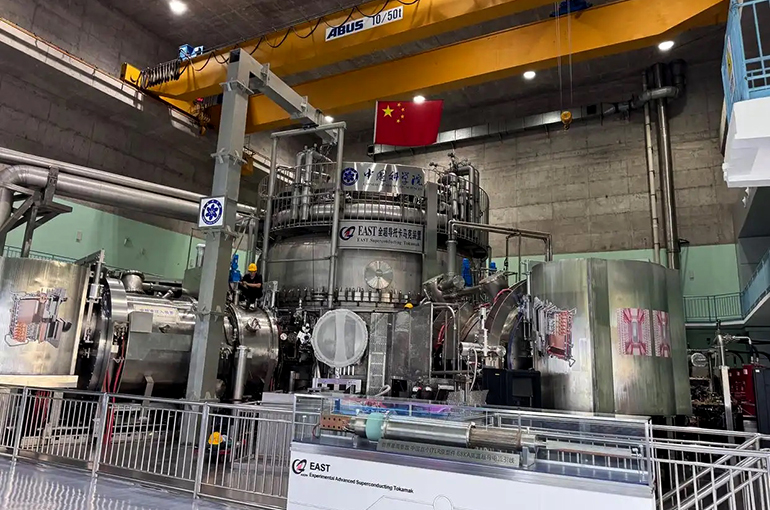 A Look Inside China’s ‘Man-Made Sun’ Nuclear Fusion Project in Anhui
A Look Inside China’s ‘Man-Made Sun’ Nuclear Fusion Project in Anhui(Yicai) Sept. 22 -- China’s Experimental Advanced Superconducting Tokamak, a nuclear fusion reactor developed by the Chinese Academy of Sciences, is coming closer to realizing humanity’s dream of a ‘man-made sun’ and has recently achieved a number of breakthroughs in nuclear fusion research.
Yicai reporters recently visited the Institute of Plasma Physics at the Chinese Academy of Sciences in eastern Anhui province, where the tokamak is located, to gain insights into the current state of research. Technicians were busy performing maintenance on the huge machine, which stands around 11 meters high, is eight meters in diameter and weighs over 400 tons, and were preparing for the next round of experiments when Yicai reporters arrived.
“If this machine can generate fusion energy as stably and continuously as the sun, it will help overcome the limitations of today’s main energy sources, namely coal, oil and natural gas, which are finite and non-renewable,” said Wang Teng, associate researcher at the Institute of Plasma Physics under the Hefei Institute of Physical Science.
The tokamak, better known as EAST, achieved a record-breaking temperature of 100 million degrees Celsius in January, which is nearly seven times hotter than the sun’s core, Wang said. The tokamak managed to hold this temperature for 1,066 seconds and proved that the system can reliably operate at such high temperatures. This was a world first and marked a major leap from basic research to engineering applications in China’s fusion research.
Work started on a next-generation nuclear fusion reactor called BEST, short for Burning plasma Experimental Superconducting Tokamak, in May, building on the successes of EAST. It should be fully assembled by 2027 and experiments will start soon after, with the aim of achieving a controlled demonstration of nuclear fusion power generation by 2030. This will pave the way for the construction of the China Fusion Engineering Demonstration Reactor and, by 2050, a commercial nuclear fusion power station. This would be a significant leap from laboratory research to engineering verification in the field of nuclear fusion.
“Once BEST is completed and fully tested, we will then begin experiments. It is possible that we may witness the production of the world’s first kilowatt-hour of electricity from a fusion reactor and the lighting of the first lightbulb with this power,” Wang said.
Unlike EAST, which focuses on scientific experiments, the BEST project emphasizes engineering verification and the commercial use of nuclear fusion technology. The project operator, Fusion Energy Technology, has attracted major backers, including the local government, state energy giants China National Petroleum Corp. and China National Nuclear Corp., as well as private investors such as electric vehicle startup Nio. It is also engaging with equipment suppliers which will help lay the foundation of the nuclear fusion technology industrial chain.
Editors: Tang Shihua, Kim Taylor